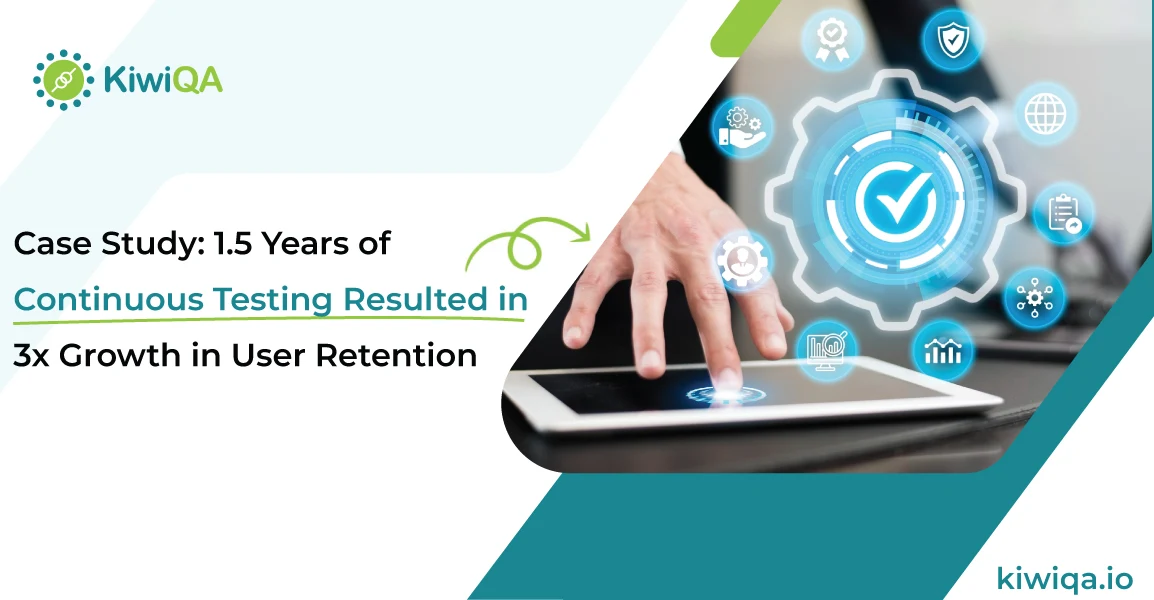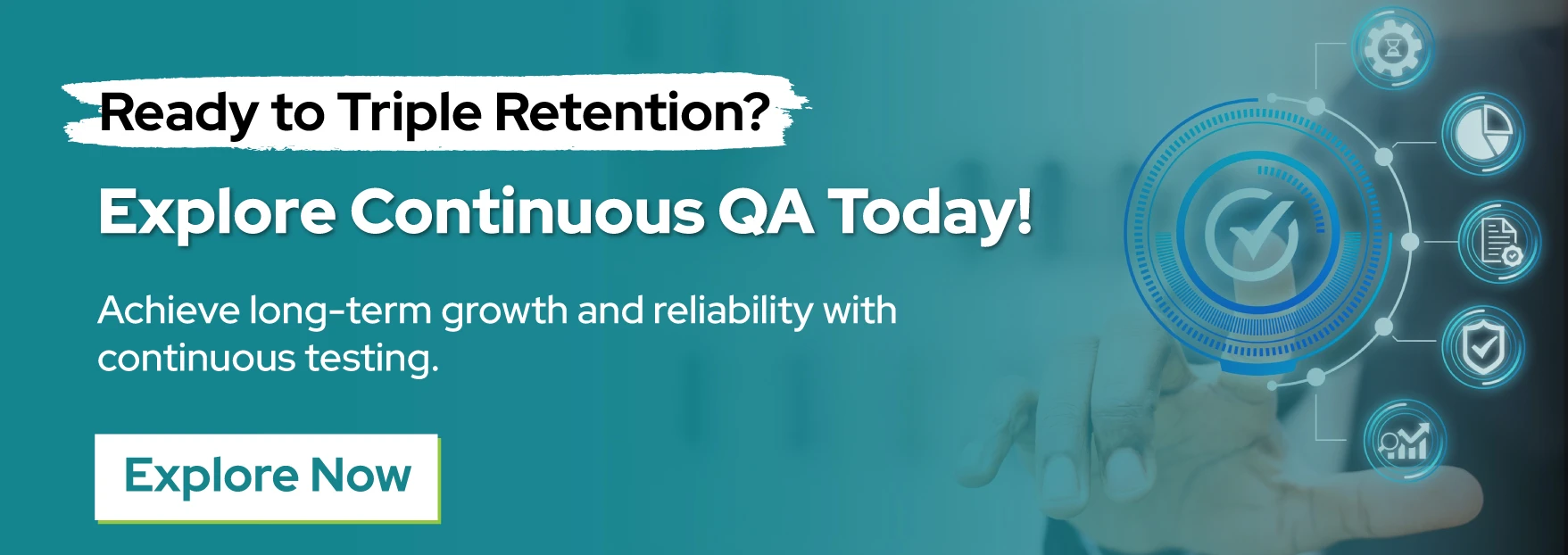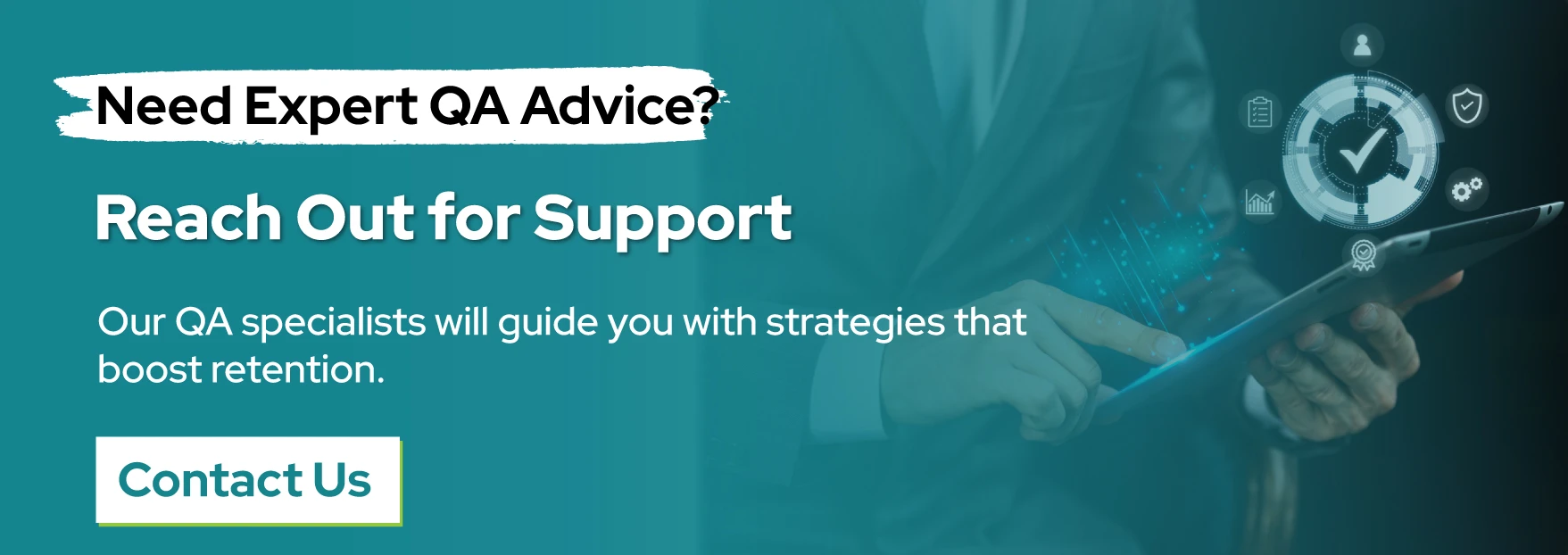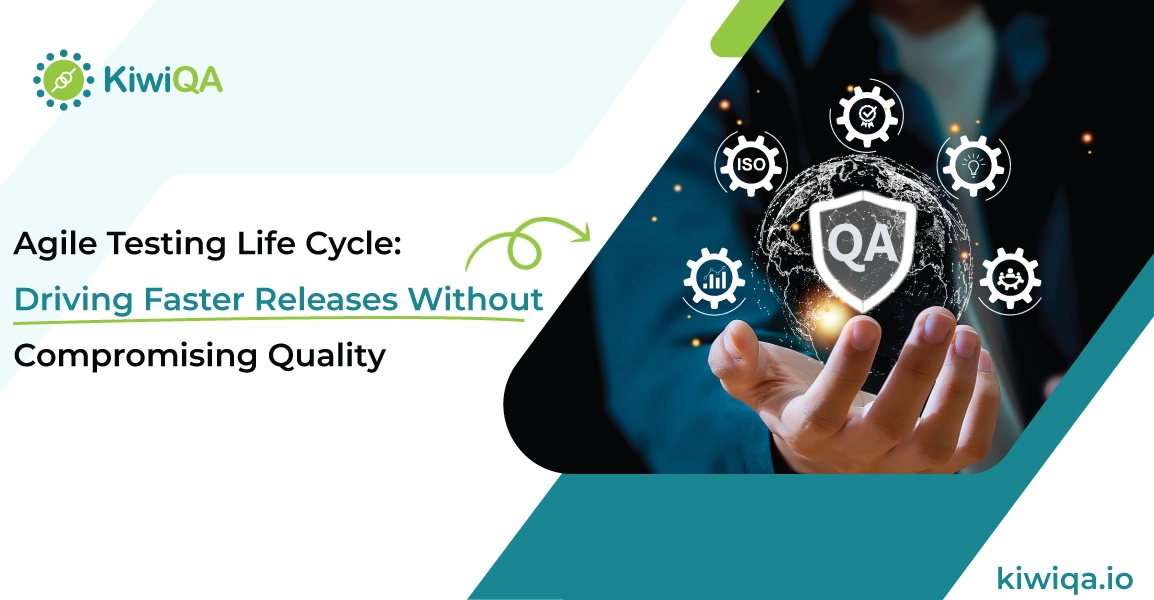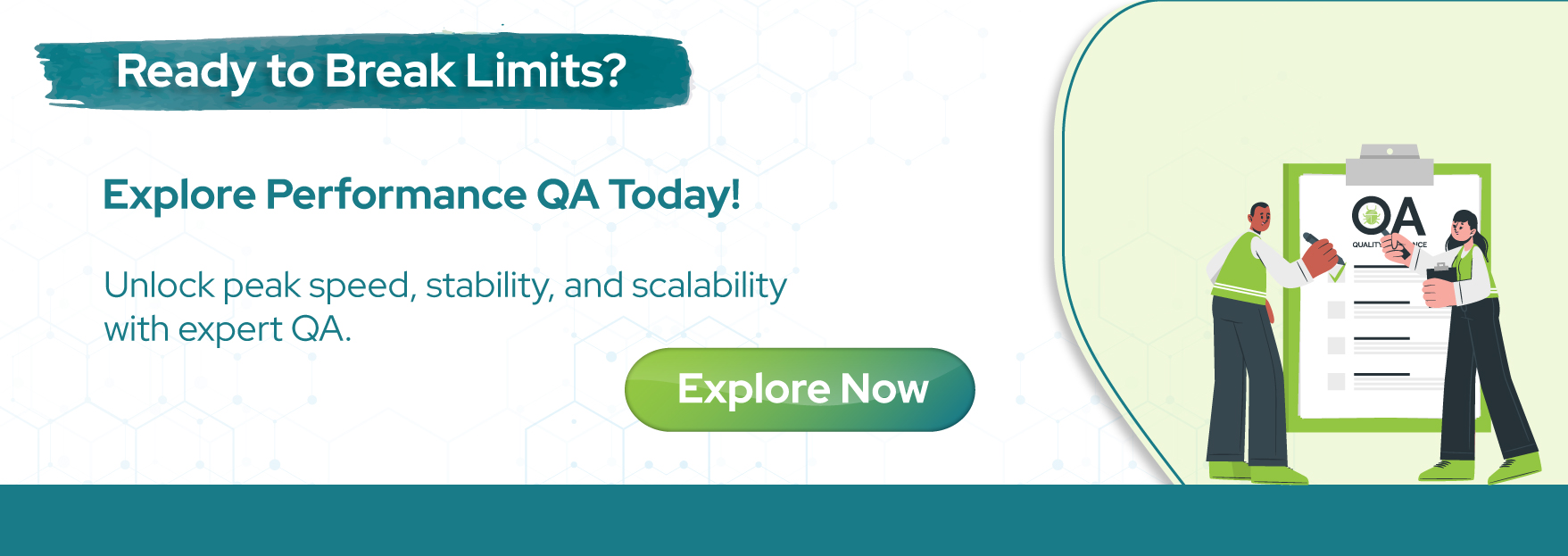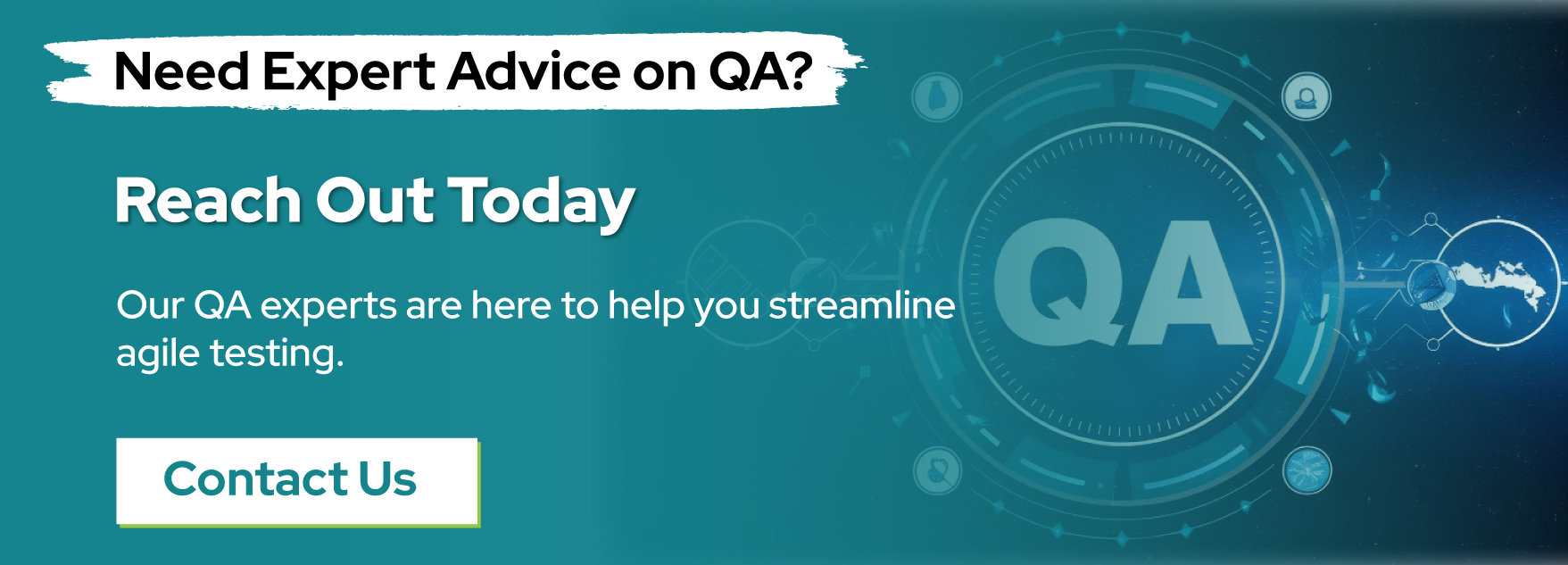Any digital product flaunts its eminence through its retention rate. It is evident that customer acquisition can draw attention to become your loyal customers. But retention ensures the product is compatible enough to offer a lasting impact in the market. In this case study on continuous testing, we will discuss how 1.5 years of continuous testing helped us drive measurable improvements in user engagement. This testing is also going to grasp a rapid market size of USD 3 billion in recent years. Our dedicated efforts have made us fetch 3x boosts in the retention rate of our clients’ products.
➥ Why User Retention Matters?
Customer acquisition has the power to capture the attention of your audience and make them explore your versatility. But the high retention rate makes them come back to you and become your potential audience. A product that retains its customer base can scale sustainably. On the other hand, a product that doesn’t value retention can’t withstand the dynamic approach of the market.
A strong retention rate can offer higher lifetime value. With every retained customer, you can experience lower churn and stronger loyalty. As a result, you can attract more opportunities for upselling and referrals. In this valuable case study on continuous testing, we will further show how prioritizing retention through significant experimentation created major gains in the respective field.
➥ What This Case Study Covers?
Let us understand the detailed aspects of the case study and the project that we have worked on.
• The case study lasted for over 18 months, and our testing approaches systematically eradicated barriers that have been limiting the retention rates of our clients’ product.
• Our ultimate goal was to improve the user loyalty of the product through effective continuous experimentation and testing. Our effective continuous testing case studies have made us seamless in the market, and this project has garnered a great reputation. We implemented structured continuous tests and analyzed the outcomes precisely. Accordingly, our testers have made refined product decisions to push it into the diverse market.
• Finally, we got the positive response for the dedication we have put in for almost 1.5 years. We encountered a 3x boost in the retention rates along with higher engagement on the product features. With a repeatable testing culture, we made it possible. Our insights have turned out to be the valuable actions that our client wanted.
Background and Initial Challenges
Let us make you aware of the background of the project and the type of challenges we have faced during the testing approaches.
➥ The Product at the start
• Talking about the product, it was a fast-growing telecom application, specifically curated to help users manage calls and billing with seamless communication. Recently, this type of application has been garnering a great customer base. So, we had to become extremely careful to keep the customer base loyal for a lifetime.
• When it came to the initial user retention baseline, the rates were in single digits. Many users churned just after the first week. This has made us aware of the product’s onboarding and engagement issues.
➥ Early User Behavior Insights
• Before directly getting into the solutions, our development team verified the user journeys to get the drop-off points. As per our analysis, we have noticed many users exited before completing their onboarding process and left the app after a few sessions.
• With qualitative and quantitative feedback, we understood that the onboarding process of the product was confusing and lacked customization. The poor and irrelevant notifications were problematic for the consumers. Moreover, the feature discovery was limited, where the users were not able to get the full potential of the app. This has made it clear that the app demands a case study on continuous integration testing.
➥ Internal Bottlenecks
• The team faced significant challenges during the assessment. The testing infrastructure was not efficient, as there was no established A/B testing platform or proper workflows.
• The product elements majorly prioritized feature releases instead of doing user-centric improvements. As a result, the customer base didn’t get the full potential of the product and abandoned it. Further, the product didn’t have proper resources for the testing.
Building a Continuous Testing Culture
After assessing all the challenges effectively, the testers understand the importance of a case study on continuous testing. This is how the testing culture has been initiated.
➥ Setting up the Infrastructure
• The project began by building a strong foundation for a continuous testing culture. Our testers implemented A/B testing platforms for controlled experiments. The integration of advanced analytics tools has been done to track engagement and retention rates. Further, the introduction of feature flags has been done for controlled testing environments.
• The team workflows have been restructured. Cross-functional teams, like developers, designers, and QA, were assigned ownership for the specific user flows. This is the best way you can leverage faster feedback loops without any limitations.
➥ Defining What to Test
• Instead of randomly testing the product with multiple tests, we went for a hypothesis-driven approach. For each of the experiments, the team defined a hypothesis to keep the testing process streamlined and goal-oriented as per the client’s demand.
• Implementation of prioritization frameworks has been done, like ICE and PIE. This has made us align the testing process for secure results. This ensured we value quality experiments instead of randomly adopting tests.
➥ Embedding Testing into Product Development
• With the approach of continuous testing case studies, our team considered that testing is a major element of any product development. So, instead of one type of experiment, we continued the process with multiple testing cycles.
• We also initiated a weekly sprint cadence, with at least one experiment implementation, and assessed every cycle effectively. Each of these experiments has to be documented precisely to strengthen the knowledge base. Further, it can help testers to make better decisions in the future. This shift was valuable as we wanted to learn the product properly instead of considering it as a source of income.
Also Read: Agile Testing Life Cycle: Driving Faster Releases Without Compromising Quality
Key Experiments that Drove Results
Here, you can go through the key experiments that made us garner the potential changes we wanted for the product.
Onboarding Optimization
• At first, we tested the number and sequence of the onboarding screens. Apart from this, we also test the CTA and the multi-step instructions to assess the performance of the product.
• With this case study on continuous testing, we saw the outcomes to be very positive. It led to X% improvement in day 1 retention. The users of the product encountered greater clarity, and the drop rate was also minimized. This was a winning situation where the continuous testing values made the product have a measurable impact.
➥ Notification Strategy Revamp
• Previously, the notification features of our client’s product were generic. This is the reason it has been ignored by viewers, and many of them tagged it as spam. This has made the testers introduce behavioral triggers. This has made the notification features more efficient, where customers get reminded when they log out of the app.
• With A/B testing, time-based and activity-based notifications have been infused. We also adjusted the tone and content to offer a personalized effect. As a result, the engagement rate increased drastically. Weekly active users have become more consistent, and the notifications have become more valuable and perceived.
➥ Feature Discovery Enhancements
• With continuous testing, we noticed that users who are engaged with the advanced features were more likely to adopt the product. But it was challenging to make the new users find the reliable features of the product. This is why we implemented guided tours and in-app cues for complicated functionalities. With the inclusion of spotlight messages, we were able to highlight new features or tools. Contextual cues helped the users who further explored the application.
• The feature adoption rate rose significantly. Users engaging with multiple features showed a higher graph. The product also made a great reputation in the market for its immense feature categories.
Reducing Churn through Feedback Loops
• Our case study on continuous integration testing has become valuable as we battled the churn by capturing the insights from departing users. We added exit surveys where we asked the reason behind leaving the product. Further, we integrated user interviews to dive deep into the customers’ points of view.
• This feedback-oriented approach helped us in stabilizing the churn and minimizing the long-term drop-offs efficiently.
Measuring Success over Time
This is how our efforts have made us enjoy the successful efficiency of the product.
➥ Metrics Tracked
• Firstly, we tracked the metrics that signified the real users’ loyalty and engagement with the product. We measured the retention rate on day 1, day 7, and day 30 to analyze their early engagement and long-term stickiness.
• With the analysis of engagement per session, we verified the depth of usage of a product and how it has influenced the customer to stick to it.
• With cohort analysis, the retention rate has been segmented by acquisition date and demographics.
➥ Iteration and Long-Term Gains
• This was not a matter of overnight success, as you can’t get the retention rate increase within minutes. We have tried our best to test the product and offer suitable results that the client wanted.
• In the first seven days, we observed a noticeable shift in the retention rate, and by the 6th month, the improvement was steady. Further, by the 12th month, the adoption rate was higher due to advanced features, and by the 18th month, the retention rate increased efficiently. We were able to gain this valuable progress due to continuous testing and case studies. Moreover, we were consistent and always tried to achieve long-term solutions instead of temporary and instant ones.
Lessons Learned
Here, you can go through the list of tactics we implemented and the elements that worked for us.
➥ What Worked
• Embedding testing into the product culture worked tremendously. So, it was our main priority instead of considering it as an optional element. We cultivated a mindset where every product decision has to be questioned. Further, we tried our best to rectify the mistakes through precise data. Our designers also pushed visual preferences to get that measurable impact. Engineers also tried their best to offer speed and scalability to the product with a proper user experience.
• Further, cross-functional healthy collaboration between designers, QA developers, and product managers helped us test the product efficiently without any communication gaps. We documented the results and accordingly prioritized the areas that needed solutions.
➥ What Didn’t Work
• In the early phases of the testing, several experiments failed to perform due to poorly defined hypotheses and inefficient setups. This further resulted in unfavorable data that wasted time and user traffic.
Another foremost challenge was insufficient sample size. To validate the results quickly, the team stopped tests when they encountered promising results in the earlier phase.
• Another effective drawback was the over-testing approaches. When the testing aspects increased within the team, we tried to test even minor changes. No doubt, it showed commitment but created testing fatigue. Some testing offered us minimal learning, but others offered false positives.
➥ Unexpected Insights
• One of the major outcomes that we encountered through continuous testing was unexpected user behavior patterns. For example, one test result made us assume that we need to reduce friction in the checkout procedure, while the other test recommended that we add an extra step for customer trust.
• Another challenging aspect was that we discovered hypotheses that were not worthy and were entirely wrong and misleading. This further signified the value of humility in testing. So, as per our understanding, we consider failure as a stepping stone towards a better product understanding.
Each invaluable hypothesis gave us clarity about the product requirements, and accordingly, we moved forward and made smarter decisions. This has made the product a success after completing a testing period of 1.5 years.
Also Read: Why Security Testing Should Be a Top Priority for Insurance Applications?
How You Can Apply This to Your Product?
Here, you can go through the steps that can help you test the product precisely.
➥ Start Small but Think Big
• If you are ready to begin your product testing journey, start by prioritizing the most critical user journeys, such as sign-up, onboarding, and retention touch points. All these sections have the greatest impact on your business outcomes. Some small improvements can also offer you measurable ROI. By beginning with this approach, you can significantly showcase value to the stakeholders.
This approach also helps in creating credibility for scaling your experimentation across other areas of your product.
• Make sure to train your testing approaches efficiently to get desirable results. In the beginning, your team may find it difficult to frame a hypothesis or understand the importance of cross-functional coordination. But with continuous practice, your skills can improve significantly. Set realistic expectations, and you need to accept that a few tests may fail, but it offers you valuable experience to strive for more accurate results in the future. Over time, you will see your teams naturally questioning assumptions along with better data literacy.
➥ Align Teams around User Outcomes
• Another foremost step is to align your teams around the user outcomes instead of vanity metrics. You might get attracted to measuring success through download rate and terms of clicks. But these elements don’t always reflect potential user values. Instead of this, streamline your experiments to metrics that offer meaningful progress along with an engaging retention rate.
If we talk about an example, a test that drastically increases the sign-up rates but is not able to form long-term engagement, then this is not a positive response. With shared KPIs, you can prevent local optimizations that generally impact the broader terms. It also encourages cross-department collaboration, and every
team member understands the efforts behind every aspect of the product.
Moreover, when all the stakeholders agree upfront, then there will be no post-test debates and risks. Your focus will be on the next testing criteria instead of dealing with disagreements.
➥ Embrace a Long-Term Testing Mindset
• The most important thing to abide by in testing a product is your patience. Continuous testing is not going to deliver instant results and growth. You might experience failure during the testing journey. Most of the time, you may experience small gains. But your dedication shouldn’t be harmed through this. You need to be strong with your motives and engage yourself in learning.
You need to carry on your leadership qualities by setting realistic expectations. Instead of going for immediate ROI, you must desire long-term success. With patience, you can achieve this win. With better testing approaches, you can easily improve your product performance and turn your visitors into loyal customers.
• In the end, you need to understand that continuous testing can offer you immense knowledge. Each experiment, no matter how successful it becomes, generates data that sharpens your understanding of the user base. With time, the knowledge base becomes an advantageous factor in the competitive field. You can easily understand the market shifts and can innovate ideas that can boost your product’s uniqueness.
Embracing continuous testing can always extend your sustainable success. So, instead of adopting quick wins, go for in-depth discoveries.
Ready to Turn Testing Into Tangible Growth?
Continuous testing doesn’t just limit itself to becoming a tactic. But it can be the core philosophy of your product development. With a better understanding of this culture, you can easily unveil long-term success.
This case study on continuous testing highlights that success is possible if we consider our mistakes as a knowledge base. With our efforts, the company was able to achieve a great retention rate within just 18 months. So, start small and always target meaningful solutions. Let continuous testing push you to the top in the competitive edge.
